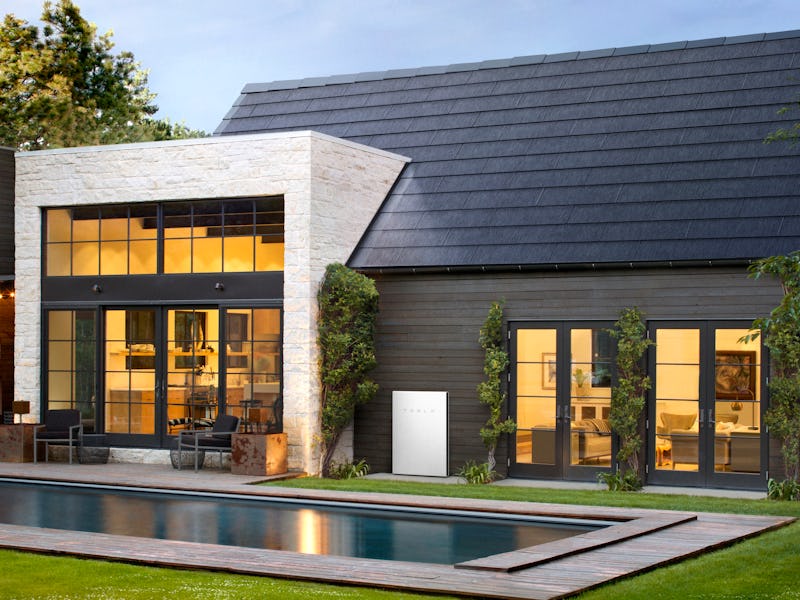Tesla Solar Roof: Elon Musk outlines plan to reach 1,000 homes per week
Tesla is about to make the sun shine on its solar roof project, with a plan to boost production and installations.

Tesla is ramping up its efforts to roll out the Solar Roof to more homes, moving past the project's early stages that saw the solar-harvesting tiles installed on just a handful of homes.
During the company's first-quarter 2020 earnings call last week, CEO Elon Musk explained plans to get roofs installed on 1,000 homes per week. The target follows a different goal to start producing enough tiles for 1,000 homes per week, a goal it set in October 2019 and claimed to have achieved in March 2020.
In the call, Musk said the team could reach 1,000 installations per week within the next year. That goal would also need to take seasonality into account, with the fact that Tesla will find it harder to install roofs in winter. It was on track to reach this goal, Musk claimed, but the coronavirus outbreak stopped this "both from the ability to install and the ability to get permits."
Musk explained how the team will reach this goal:
"We want to have at least 1,000 Solar Roof install teams, taking a week or perhaps a little less than a week to do an install, which gets you 1,000 a week roof installations. We see demand is good, production is good, so it's really all about the install. And then like I said, also build out the training, the very diverse group of companies in the roofing industry to also install Solar Roof. That, I think, will allow us to scale far beyond 1,000 a week."
Musk also voiced support for planned international expansion, which he claimed in February could take place later this year:
"We're also seeing a lot of interest outside of North America. So we do expect this to be a product that is international and actually seeing a tremendous amount of interest from China on the Solar Roof. We're confident this will be a very significant product for the company over time."
It's the latest step in Tesla's plan to build out its Solar Roof installations, which impress with their ability to collect solar energy while looking like a regular roof. The product dazzled when first unveiled by Musk in October 2016, alongside a Tesla Model 3 in the garage and a Powerwall battery storing the energy from the tiles for 24-hour production. By August 2017, the CEO and chief technology officer Jeffrey B. Straubel were both using the roof on their own houses.
But the early rollout was slow, and it remained a niche product for a handful of consumers. Amanda Tobler, one of the first to have the roof installed on her California home, told Inverse in May 2018 that the roof had been a "worthy endeavour." But that same month, Reuters reported that just 12 people had had the roof installed.
Tesla's solar roof up close.
In March 2019, Musk explained at the Tesla Model Y unveiling event that rollout was slow due to the Tesla Model 3. The mass-market sedan that entered production in July 2017 starved Tesla of battery cells, required for the Powerwall to hold the energy at night.
Seven months later, Musk unveiled the third-generation Solar Roof. This iteration used a redesigned tile, and a cheaper price so that in "80 percent" of cases the product would cost "less than what the average roof costs plus solar panels." Tesla also unveiled plans to work with third-party installers to boost speeds, and unlike older versions of the roof, it would be available everywhere where the solar product is available. Musk also set the goal of producing 1,000 roofs worth of tiles per week by the end of 2019.
Tesla partnered with a Chinese company for production on the third-generation tiles. In February 2020, Tesla's previous partner Panasonic announced it would be leaving the Giga New York solar factory. The following month, Tesla announced it had reached its 1,000-per-week goal, by producing four megawatts of tiles at its Giga New York factory in one week. The figure suggests each house would use four kilowatts of panels, but some installs ranked nearly 10 kilowatts. In the firm's first-quarter 2020 letter, Tesla claimed it exceeded four megawatts per week of production.
The Inverse analysis – The Tesla Solar Roof is one of the firm's most impressive products, but production has been slow. One of the most interesting parts of the third-generation tiles' announcement was the plans to speed up installations, aiming to reach eight hours. While Tesla seems committed to the plan to work with third-party installers, it seems the firm is also aiming to boost its in-house teams to get roofs installed faster. All these will be important factors as the firm aims to navigate an international expansion of the project.